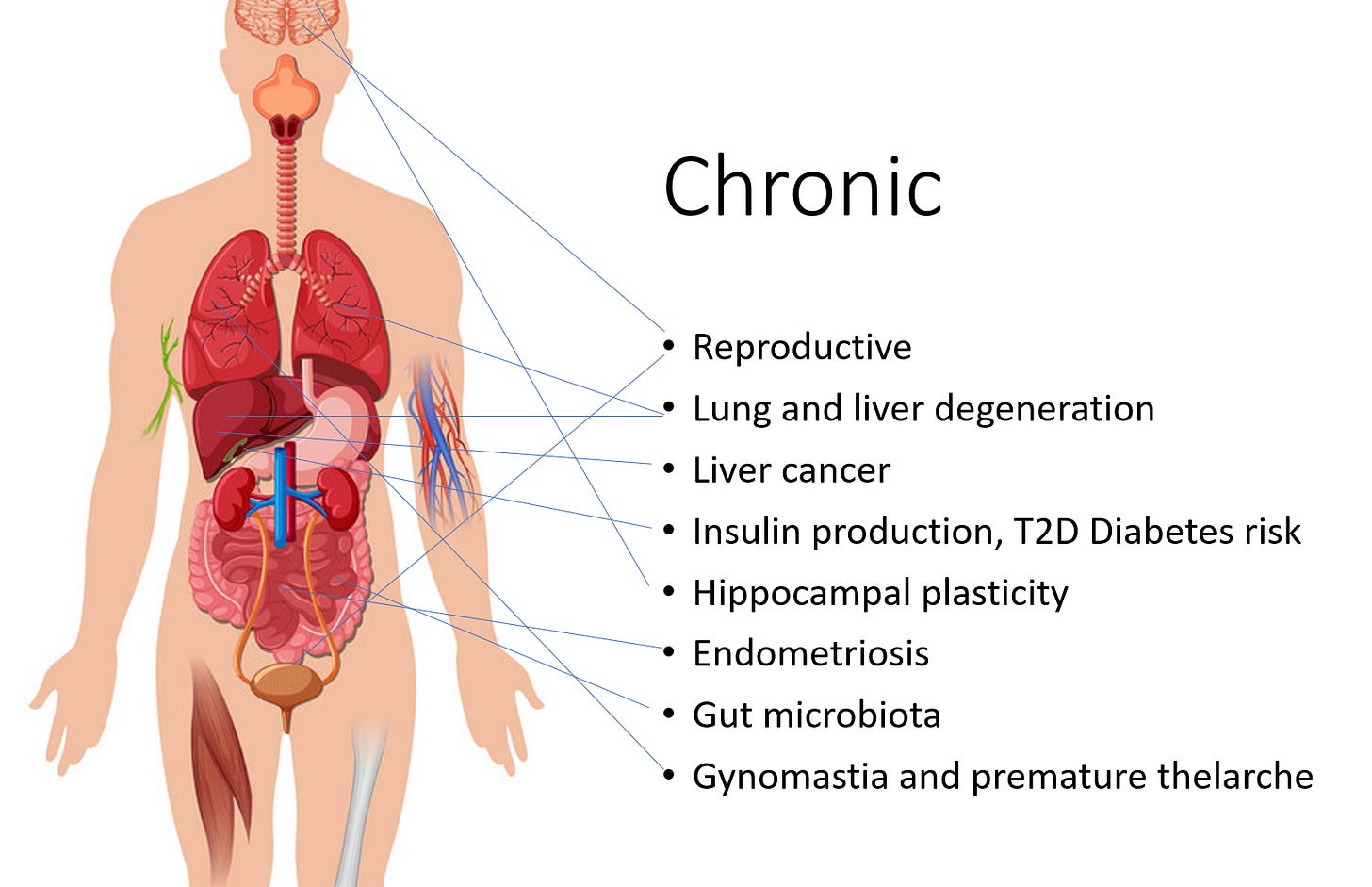The Disease Burden of Endocrine Disrupting Chemicals (jameslyonsweiler.com)
Profits by companies whose products expose us all to EDCs are higher than they should be because the cost of diseases they can cause is externalized to those companies. That has to change.
Endocrine disrupting chemicals (EDCs) are chemicals that mimic, block, or interfere with the production, action, or interactions of hormones. There are an estimated 1,000 man-made compounds that have EDC properties. Over 5 billion tons of EDCs are produced each year worldwide, and they are found in many different consumer products.
By their actions, EDCs can alter normal fetal development in ways that can alter or impair sexual function, impair metabolic functions, increase the risk of certain cancers
The estimated disease burden in the EU due to EDCs per year is $340Bln – and children and individuals with impaired immune systems are most impacted.
In the US, the estimated disease burden of EDCs amounts to 2% of our GDP.
One of the most well-known EDCs, Bisphenol-A, is not supposed to be used in the US due to a ban put in place by the EPA. The ban, however, the ban is considered by environmental groups like The Environmental Working Group to have no teeth. More on that below.
The “Gender-Bending” Chemical Taboo
Most people who have hear about EDCs most likely have heard about their effects as “gender-bending” chemicals. While it’s true that come EDCs can have an influence on the development of sexual organs, it’s taboo to consider whether they influence or “determine” sexual orientation.
The taboo on that issue has stopped a lot of open discussion of the disease burden of EDCs; after all, who wants to represent homosexuality, bisexuality, or pansexuality as a medical disorder? EDCs place people of all shapes, sizes, color etc. at increased risk of other diseases, as well, like Type 2 diabetes. So we need to move on from that taboo.
Here’s the issue – unless we discuss the disease burden caused by exposure of people regardless of sexual orientation to EDCs, we’re not going to be able to influence policy change that leads to a a reduction of human pain & suffering – and also that ends the exposure of animals and other living things in the wild to powerful chemicals that impact their health and reproductive output, as well. So, love how you need to love, but let’s get down to business: EDCs are deadly.
Routes of Exposure
The primary routes of exposure to EDCs include ingestion of EDCs found in food & water, including public drinking water, to fetuses in utero due to EDCs in mothers’ plasma, ingestion of breast milk by infants of mothers with EDC body burden, absorption through the skin via lotions and grooming products, and inhalation of dust laden with EDCs.
(Read the rest at free at jameslyonsweiler.com)




